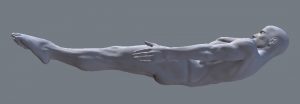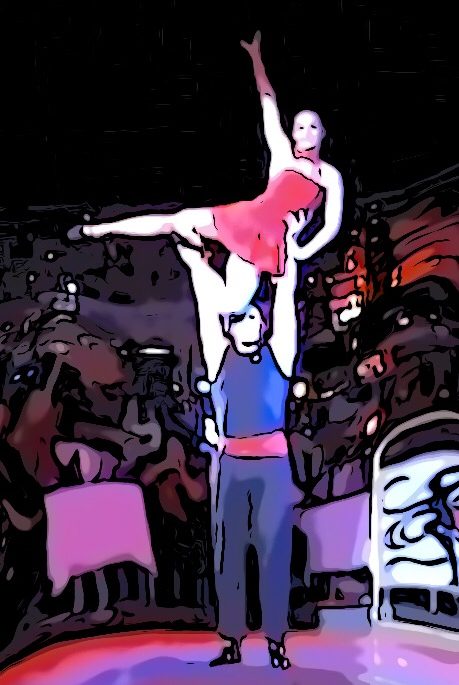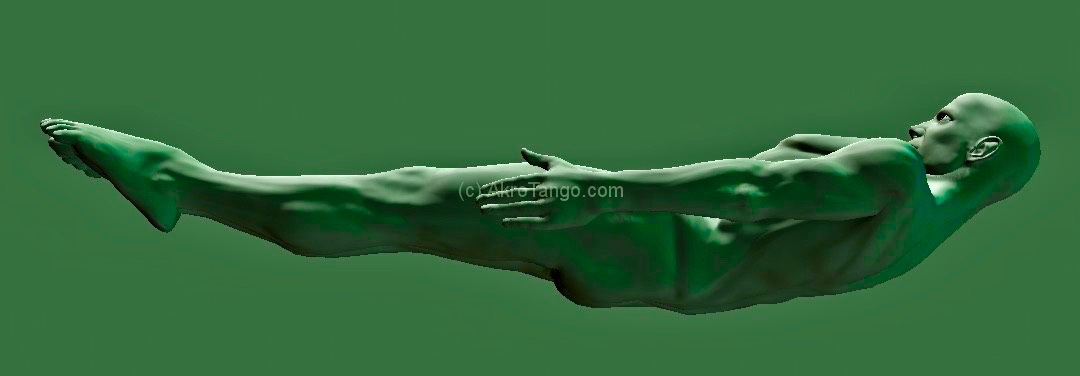Actually, this position is called backflyer. Since the flyers initially like to sag through, for this position, also other names are known, such as cross-crusher and dead bird. The positive side effect of sagging is that the center of gravity of the flyer comes closer to the one of the base and thus creates less shear forces (for example, dislock and screw rotations from this position are easier). Especially during the entrance to this figure the Flyer creates very strong shearing forces, if he does not tilt to the final position, but straighten up too early.
If a flyer overcompensates the sagging and shortens the abdomen very much, he comes to lie in the shuttle position. In this position the centre of gravity of the flyer is higher and he leans in the direction of forward rotation…


It applies the same as for the belly flyer, for transitions to other positions a straight position of the flyer is more suitable. The flyer can practice by placing himself on the ground with his back. Keep head, shoulders and feet lightly away from the floor! Raises. The lower back must remain in contact with the ground. The base balances the backflyer at the hips and the lower back of the flyer.


As soon as the flyer sits up in this position, its center of gravity and thus the contact point changes in the direction of his feet. Initially, flyers try to tilt towards the feet by angling them. But this causes exactly the opposite, because now the weight tilts in the direction of her head. Beginners should therefore always be secured in this position.
Deutsch

